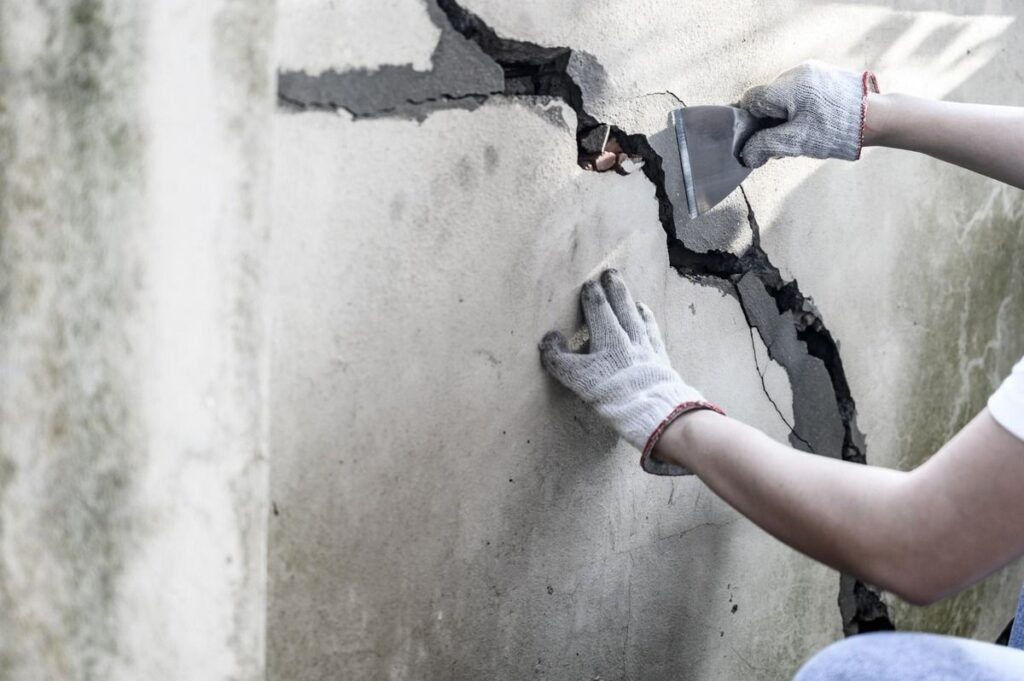Cracks in the walls and ceilings are quite common in most houses. They can occur due to natural settling, changes in temperature, or expansion and contraction because of moisture, says BHB Real Estate Group. While minor cracks are usually cosmetic, deeper or wider cracks may indicate structural issues that require attention. First, identifying the cause of the crack will help in undertaking proper repair that will not have the cracks return soon. Should the crack issue be frequent, one might consider investigating any foundational shifts or possible leaks that are causing it.
Preparing for Repair
The first step to repair a crack involves preparing the surface. Scrape off loose paint, dust, and debris using a putty knife or with a wet rag. Cleaning the crack assures that the material for the repair will set correctly and provide a smooth finish. If the crack is deep, one might wish to take the time to enlarge it just a little at the bottom, which allows the filler to hold a little better when applied. It is only then that it’s ready to fix.
Applying the Correct Tool and Material
The proper approach in having that seamless repair begins with choosing correct materials. The essential materials required for repairing walls can be supplied by visiting the hardware store and include the following: spackling compound, joint compound, sandpaper, paint, etc. To fix the very small crack or cracks in plaster, use the lightweight spackling; other larger-sized ones require strong types of joint compounds. Besides these, the recurrent crack also warrants extra protection against reappearing by fixing fibreglass mesh tape right behind it. Picking the right materials will make the repair blend into the surrounding surface.
A well-stocked construction supply store will have everything a person needs to effect a successful repair. The knowledgeable staff is very handy in recommendations of appropriate products for different kinds of cracks and materials on the wall. Stores will vary in carrying many different spackling compounds, various joint tapes, and sanding tools to make the right supplies for any repair. The quality of repairs can be elevated with better products obtained from a good hardware store, even for the best finishes.
Repairing Small Cracks
Small cracks in drywall and plaster are the easiest to repair with spackling or joint compound. A thin layer should be applied over the crack using a putty knife, spreading evenly to fill the gap. The compound mustn’t be sanded until fully dry: Light sanding of the surface to ensure a smooth texture. A second coat and light sanding, if necessary, feathers the repair out to match the surrounding wall or ceiling. Once the surface is smooth, a coat of primer and matching paint can be applied over the top to complete the repair.
Repairing Major Cracks
Larger cracks require additional support to prevent their reopening. Taping the crack with fiberglass mesh helps to keep the repair in place and also adds some structural support. The tape is then covered with a layer of joint compound, which is smoothed out to feather into the surface it covers. Complete drying of the compound between layers is necessary for strength and evenness. Sand the area once dried and paint over the repair for a uniform wall or ceiling look.
Ceiling Crack Repair
Cracks in ceilings involve a particularly careful method since they are overhead. Lay a catching protection for dust and debris on the floor. For smaller cracks, spackling compound can be used just like in wall repairs. In case of large ceiling cracks, reinforcement should be performed using mesh tape to avoid sagging. Thin layers of joint compound are applied so as not to overburden the surface with excessive weight. Once the repair is dry and sanded smooth, a fresh coat of ceiling paint will restore the ceiling to its original appearance.
Preventing Future Cracks
Control of environmental factors that ensure structural stability will prevent the return of cracks. Indoor humidity, within a constant range, minimizes expansion and contraction in building materials, which cause or widen cracks. Small movements at corners and seams, which may be inherent in susceptible locations, can be accommodated by flexible caulking. If the specific cracks continue to reappear after repair methods have been tried, a professional would need to be consulted for a structural evaluation to look into deeper problems.
Maintaining a Smooth and Durable Finish
After the cracks are fixed, proper maintenance will keep walls and ceilings at their best. Regular inspections enable small cracks to be dealt with before they widen. Cleaning surfaces with mild soap and water avoids buildups that make imperfections more noticeable. The application of fresh paint, when necessary, helps maintain a polished and well-maintained appearance. With careful repairs and ongoing maintenance, walls and ceilings can remain smooth and free of cracks for years to come.






